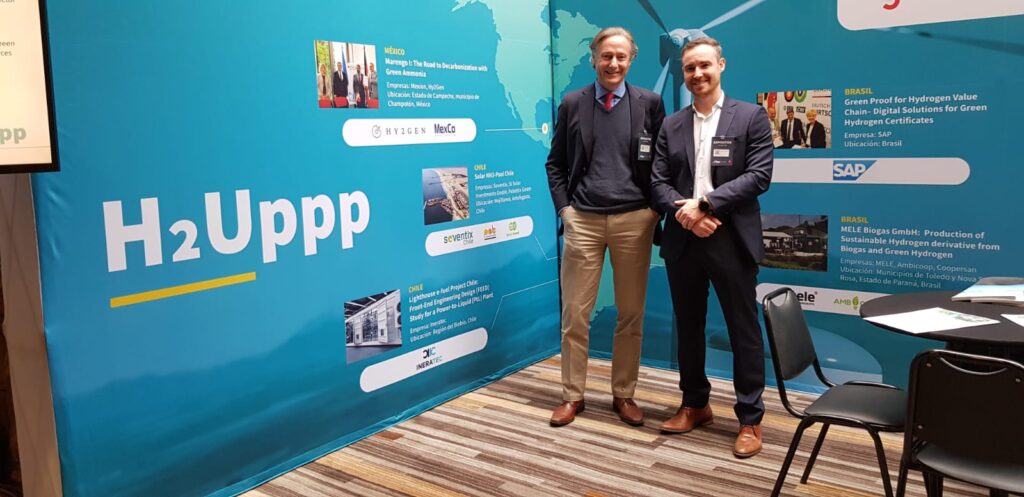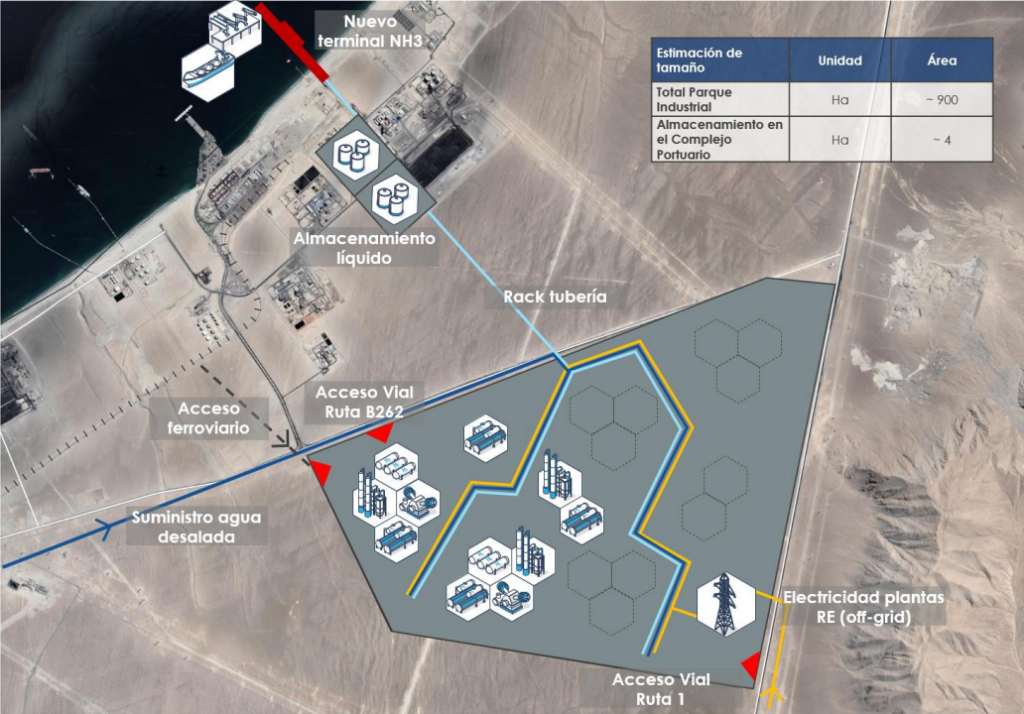The case for an eco-industrial park in Antofagasta, Chile
One promising idea to accelerate green hydrogen and Power-to-X production is eco-industrial parks. In this collaborative structure between companies located in a specific area, they can exploit the synergies between production facilities and shared infrastructure. This can reduce investment and operating costs, achieve economies of scale, mitigate risks, improve land use and resource efficiency, and reduce environmental impacts. Therefore, the design and management of industrial hydrogen parks will be crucial for the feasibility of projects as well as for the competitiveness and sustainability of hydrogen hubs.
Developing a master plan for a hydrogen industrial park requires defining the design criteria. They are based on product demand for domestic use or export markets, analysis of existing and required infrastructure, studies of potential sites and renewable resources, and the sizing of the park. The Antofagasta region, located in northern Chile, is expected to become one of the country’s main production regions for renewables-based products. By 2050, the region could meet a total demand of 2.65 Mt of hydrogen equivalent per year, for both domestic and export markets. The region has a high potential for renewable energy generation, with a current installed capacity of 1.7 GW of photovoltaic and 108 MW of Concentrating Solar Power (CSP).
Mejillones, a district in the Antofagasta region, already has key infrastructure in place, reducing the need to develop new facilities for hydrogen. These favorable conditions position Mejillones as an attractive location to explore synergies between hydrogen projects.
Plant to produce 2,000 tonnes of green ammonia per day
Building on these potentials, Soventix, Solar Invest and Pabettin GmbH, proposed a master plan for a hydrogen industrial park in Mejillones, and developed a conceptual design for the Public Private Partnership project “Solar Ammonia Chile”, a renewables-based ammonia plant. It will have an electrolysis capacity of 800 MW and produce 1000 tonnes of ammonia per day in the first phase and 2000 tonnes per day in the second phase. This green ammonia project will be located within the proposed industrial park and will showcase the site’s advantages for similar projects. Its conceptual design is supported by the International Hydrogen Ramp Up Programme H2Uppp, financed by the German Federal Ministry for Economic Affairs and Climate Action. Through the Public Private Partnership, H2Uppp has provided technical, administrative, and financial support to conduct the required studies, which resulted in valuable insights and a novel contribution to the development of the regional green hydrogen hub.

Why Mejillones?
The initial analysis of Mejillones confirmed that multiple key infrastructures already exist: an open access industrial port and other private port terminals, gas pipelines, aqueducts, desalination plants, an electricity transmission system, road and rail access. As for the port infrastructure, the “Complejo Portuario Mejillones” (CPM) is owned by the public company CODELCO, and is operated under a landlord and concession model. To enable the export of renewable ammonia produced in the region, the port would consider adapting the existing for solid bulk terminal (TGN terminal) in the short and medium term, or building a new liquid bulk terminal, which is included in the CPM’s port master plan for the long term.
Mejillones also has four operating desalination plants and a company which supplies water in the region. However, progress needs to be made in formulating agreements for using the existing infrastructure and developing new facilities to meet the future water needs of the hydrogen industrial park. In addition, the industrial park requires connections to existing roads and rails, as well as corridors, pipelines and electrical transmission lines.
Continued development of the eco-industrial park
In light of these infrastructure benefits, the strategic decision for the hydrogen industrial park was taken, thereby also promoting regional economic development. Nevertheless, further analysis of the land area will have to be carried out, taking into account environmental and land use regulations, in order to narrow down the exact location for the industrial park.
The sizing of the industrial park is based on its services and land footprint. It would include renewables-based electricity supply, desalinated water supply, land acquisition for the installation of several multi-scale plants to produce renewables-based hydrogen and derivatives. Additionally, other complementary industries, shared storage infrastructure for hydrogen and derivates, good connectivity, in particular access to port infrastructure for equipment import and product export, will need to be built. Currently, 900 hectares are foreseen for the park (see Figure 1).

Especially the sharing of infrastructure is expected to achieve economies of scale, particularly for small and medium-sized companies, which in turn would improve their competitiveness, sustainability and regional economic development. To leverage these shared benefits, further efforts are required to strategically design the infrastructure and governance of the eco-industrial park in Mejillones for the production of green hydrogen and Power-to-X.
Take a look at this video showcasing the eco-industrial park:
